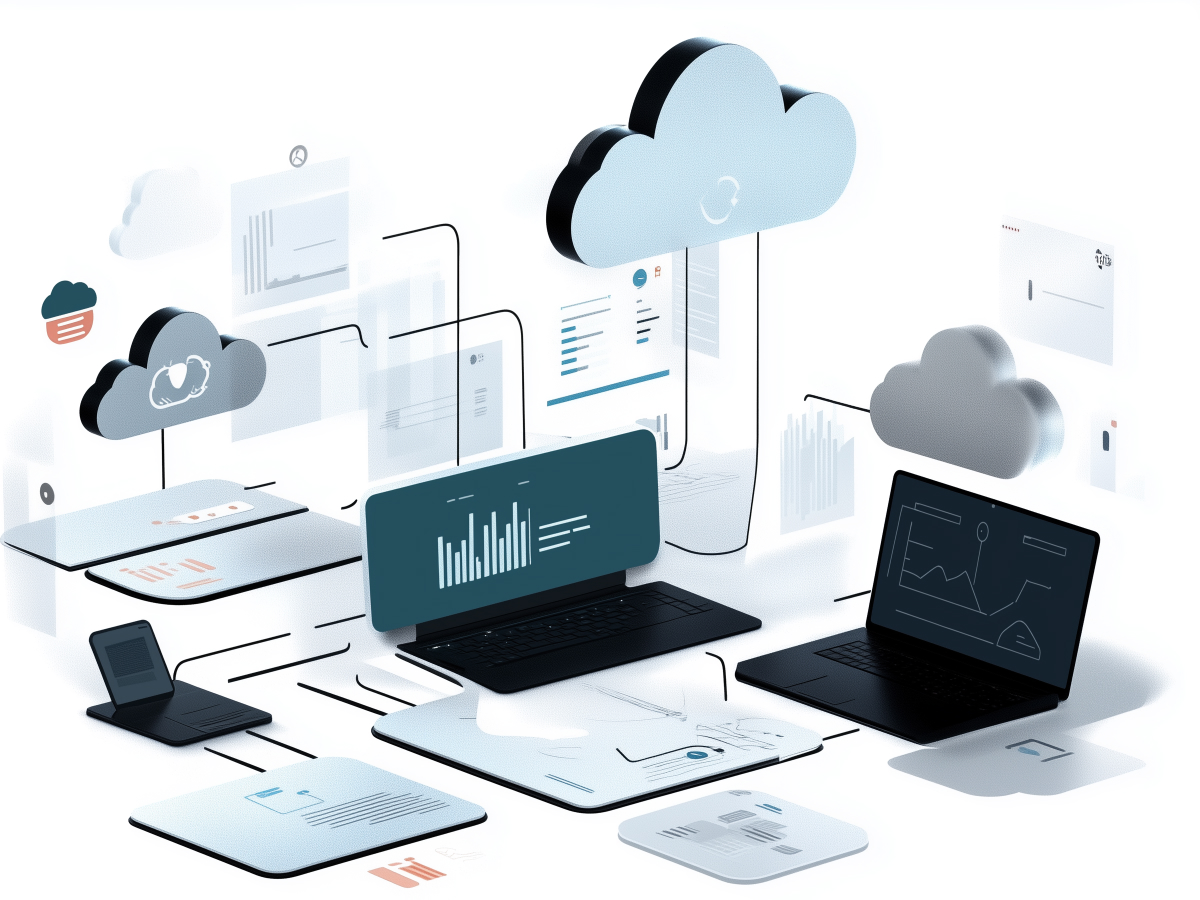Agentic AI may drive convergence between martech and CX platforms
Artificial intelligence is finally hitting a point where it can do more than just optimize existing processes. It can now begin to unify them. Agentic AI, AI systems that operate with a level of autonomy, are positioned to close the long-standing divide between marketing technology (martech) and customer experience (CX) platforms. This was always going to happen; the only real question was when.
David Raab from the CDP Institute explained it well: both digital experience (DX) and customer experience (CX) ultimately aim at the same thing, delivering a better experience to the user. In that sense, the tools from each domain are solving very similar problems from opposite ends. The operational barrier has always been in how those tools communicate and make real-time decisions together. Agentic AI has the unique potential to cut through those architecture issues. These systems are intelligent enough to recognize conversations, personalize content, assist human agents, and work across different tech stacks. As AI matures, we’ll see more of that happening without needing an expensive rewrite of each core system.
However, integration isn’t automatic. Most vendors are still developing AI capabilities within isolated products or ecosystems. Tony Byrne from Real Story Group put it bluntly, current agents are mostly “intra-platform” and, at best, “sort of” working across extended suites.
For companies that want to lead, the path is simple: stop thinking in silos. You’re either building a system that sees and responds to the full user journey, or you’re letting tech limitations set experience boundaries. Agentic AI is the first real shot we’ve had at creating a smart, self-adjusting layer across CX and marketing stacks.
Executives should be looking at where AI agents can reduce handoffs, automate decisions, and unify actions across customer service and marketing. This isn’t futuristic anymore. It’s a matter of who’s ready to operationalize it at scale.
Strategic partnerships between martech and CX vendors are growing
Let’s be clear: partnerships are happening. Acquisitions? That’s another story.
Right now, firms like Adobe and Medallia are exploring tighter integration through collaboration. Adobe pitched its agentic AI model at their recent summit in Las Vegas. Medallia was invited to join that announcement. Sid Banerjee, Chief Strategy Officer at Medallia, confirmed they appreciated the invite, but they didn’t participate because the timing didn’t align with their own conference agenda. That’s not a no. That’s a “not yet.”
Banerjee made something else clear: Medallia isn’t interested in surface-level partnerships. They want real product-to-product integration, sharing intelligence, connecting workflows, and building experiences worth paying for. So, while joint marketing is easy, the real value comes from linking capabilities in ways that deliver customer outcomes.
These are measured moves. Companies are being deliberate, not passive. Firms with real IP and scale aren’t being rushed into deals just because the market is buzzed about AI. They know how hard meaningful integration is.
As for full acquisitions, like Adobe buying Medallia or NICE acquiring a marketing platform, those ideas are circulating, but they’re still hypothetical. The tech is viable. The economics work. But culture and product alignment take time, and no one wants to get locked into a poor-fit integration just to be first. Still, it’s worth watching. History shows that partnerships often test alignment before moving towards strategic acquisition.
If you’re leading a platform company, your priority needs to be building integration hooks that count. That includes APIs, shared data models, and clean architecture that can absorb or transmit insight quickly. In other words, design for convergence, even if you’re not planning an acquisition today. That option needs to stay on the table as AI continues to rewire expectations across the customer journey.
AI technologies for martech and CX providers
AI is enabling vendors from both martech and CX to expand into spaces they didn’t, or couldn’t, touch before. You’re seeing DX firms extend deeper into customer experience. What used to be clear-cut categories, campaign automation on one side and customer service interaction on the other, are now overlapping.
David Raab, founder of the CDP Institute, pointed out the core of the shift. The tech needed to build AI-driven CX is nearly identical to what DX firms are already running. That commonality gives DX vendors a quicker route into the customer service stack. On the other hand, legacy CX platforms are burdened with workflows and user interfaces that were never designed for the complexity of digital personalization at scale. As a result, we’ll see more DX players making moves into CX, not the other way around.
This expansion means more vendors are now encroaching on each other’s turf. While there’s still room for partnerships, expect to see competitive overlap intensify. Everyone wants control of the full customer journey, from first impression to resolution. AI shortens the distance between those touchpoints.
For C-suite leaders, the call here is to anticipate convergence-driven competition. If your martech stack can start offering intelligent service capabilities, or if your CX product suddenly becomes a lead-gen channel, that shifts both your tech roadmap and your revenue model. Watch for competitors who aren’t your traditional rivals. AI enables cross-domain functionality. The smart plays will come from organizations that are structured to act on it.
Historical acquisitions indicate a move toward merging technologies
When looking at where convergence is headed, it’s important to study what’s actually been done, not just what’s been imagined. Recent acquisitions show movement in the right direction, but it hasn’t been disruptive, at least not yet.
Contentstack’s acquisition of Lytics is one of the more recent examples. A DXP picking up a CDP reinforces the idea that managing content and understanding customers is no longer a function split between teams or systems, it’s a unified requirement. This mirrors earlier activity like Sitecore acquiring Boxever, and Acquia acquiring AgilOne. These weren’t splashy deals. But they were signals.
These moves tell us that the software layer between marketing, web, and support experiences is thinning. Integration is being baked in at the product level. While none of these deals entirely redefined the market, they collectively mark a shift in product strategy: consolidate core customer understanding (CDPs) and orchestration tools (DXPs) under the same architecture.
That doesn’t mean mega-deals are off the table. It just means the market is currently choosing deliberate, component-level integration over top-down transformation. That could change as agentic AI improves the value of unified orchestration. Executives should track AI-related performance metrics closely, especially in customer data models, personalization accuracy, and agent hand-off behaviors. If these indicators improve consistently, bigger M&A plays will follow.
Enterprises should be preparing now, by aligning their foundational data structures and workflows, for eventual multi-domain execution. Convergence isn’t only technical, it’s strategic. The more composable your systems are today, the more acquisition-ready they’ll be tomorrow.
Vendors are consolidating digital tools to map a path for AI-Driven customer experiences
What’s happening now across enterprise software is a natural alignment of functions that have been fragmented for too long. Vendors are streamlining personalization engines, content editors, analytics dashboards, and CDP/CRM integrations to create more efficient, AI-compatible platforms. This isn’t a rebrand. It’s a technical restructuring aimed at activating AI at scale across customer-facing systems.
Chuck Gahun, Principal Analyst at Forrester, observed that many enterprise vendors are shifting their platform orientation around customer experience. He highlighted a clear move toward acquiring or integrating tools like personalization, content analytics, and visual editors, components that allow platforms to deliver more relevant, consistent customer interactions. He also noted that content management systems (CMS) remain central to this orchestration role because of their ability to seamlessly integrate with a range of systems, including CRMs and CDPs.
This consolidation trend marks a preparation phase. It shows vendors are setting the foundation required to support AI agents that can operate across marketing, sales, and support, all in one interface. These agents will need access to unified data models, behavioral insights, and delivery engines in order to generate fast, high-quality responses. Without tightly integrated systems, that kind of automation will always underperform.
For executives, this is a critical window to evaluate how aligned their stack actually is. Fragmented platforms slow down AI deployment and introduce operational risk. A clean, integrated foundation reduces friction, simplifies compliance, and increases time-to-value when deploying AI-powered transformations in customer experience. The companies leading this evolution are not doing it for optionality, they’re doing it because operational coordination will define the next wave of competitive advantage.
If the direction is clear, and it is, then the imperative becomes execution. Getting the tools in place today sets the stage for scale, speed, and smarter decision-making in the near term. That’s what will differentiate strong platforms from surface-level integrations as the enterprise AI landscape matures.
Key executive takeaways
- Agentic AI is primed to unify CX and martech platforms: Leaders should identify where agentic AI can bridge disconnected systems across CX and marketing to enable intelligent orchestration and reduce operational friction.
- Partnerships are active but acquisitions remain cautious: Executives should treat current alliances as scalable testbeds for deeper integration, while preparing infrastructure for potential M&A plays as vendor strategies evolve.
- Martech and CX vendors will increasingly compete across domains: Anticipate blurred category lines, especially with DX platforms expanding into CX, and reassess competitive landscapes with AI-driven capabilities in mind.
- Past acquisitions show convergence is already underway: Decision-makers should view selective acquisitions of CDPs and DXPs as signals to future-proof their own platforms with modular, cross-functional capabilities.
- Vendors are consolidating around AI-ready experience platforms: Prioritize technology stacks that integrate personalization, analytics, and customer data systems to unlock automation and performance gains from agentic AI.





